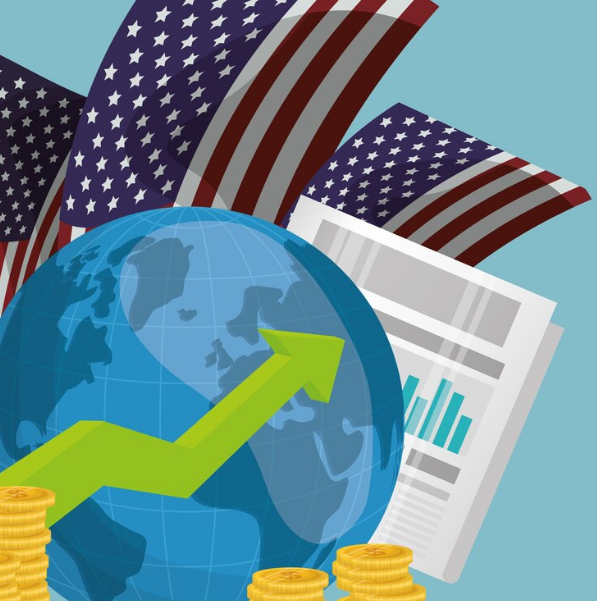Investing in foreign markets offers Americans a unique opportunity to diversify their portfolios and tap into potential growth outside the United States. However, the movement of the U.S. dollar plays a crucial role in these investments. Dollar volatility can have significant implications for both the returns and risks associated with investing abroad. Understanding how fluctuations in the dollar’s value impact international investments is essential for any American investor looking to navigate the global economy effectively.
This blog post will delve into the various ways currency volatility influences international investments. We’ll explore the underlying factors driving these fluctuations and provide insights into the strategies investors can employ to manage the risks and capitalize on opportunities. From currency risk to purchasing power, the role of the dollar in global finance is multifaceted and highly impactful. By understanding these dynamics, U.S. investors can make more informed decisions when allocating assets internationally.
The impact of dollar volatility on international investment returns

When the value of the U.S. dollar fluctuates, it directly impacts the returns that American investors realize from their international holdings. A strong dollar can reduce the value of foreign investments when converted back into U.S. currency, potentially eroding profits. Conversely, a weaker dollar can enhance returns by increasing the value of foreign assets once exchanged. Exchange rate fluctuations are a significant factor that investors must consider when venturing into global markets.
Even a minor change in the exchange rate can substantially alter investment outcomes. Consider an American holding European stocks: if the euro depreciates against the dollar, the value of the stocks in dollar terms decreases, potentially leading to losses. Moreover, currency volatility can introduce additional layers of risk for investors. While exchange rate movements can enhance returns, they can also lead to increased uncertainty and unpredictability in investment outcomes.
Factors contributing to dollar fluctuations
Navigating the complex landscape of currency markets requires understanding the myriad factors contributing to the U.S. dollar’s fluctuations. Monetary policy set by the Federal Reserve plays a pivotal role, as interest rate changes significantly impact the dollar’s value. Higher interest rates often strengthen the dollar, attracting international investors seeking better returns. Economic indicators such as GDP growth, employment rates, and inflation also influence the dollar’s performance.
Strong economic data can boost investor confidence, leading to an appreciation of the currency. Contrarily, economic uncertainty or instability can trigger depreciation. Geopolitical events, trade policies, and global economic trends further add complexity to the currency market. For example, trade tensions between major economies can lead to shifts in currency values, impacting investment returns for those with international exposure.
Managing currency risk
Effectively managing currency risk involves implementing strategies to mitigate potential negative impacts of exchange rate fluctuations on investment portfolios. One common approach is hedging, where investors use financial instruments like currency futures or options to lock in exchange rates, minimizing the uncertainty and risk. Diversification across different currencies and geographic regions is another method to spread out currency risk.
By investing in a variety of international markets, including those with different currency exposures, investors can reduce their reliance on the performance of a single currency. Additionally, keeping an eye on macroeconomic trends and staying informed about global economic developments can help investors anticipate and respond to shifts in currency values. This proactive approach allows for timely adjustments to investment strategies, enhancing the ability to protect and grow international assets effectively.
The potential opportunities of currency fluctuations
While dollar volatility introduces risk, it also creates opportunities for U.S. investors looking to capitalize on favorable currency movements. A depreciating dollar can particularly be advantageous for Americans invested in foreign assets, as the returns on these investments increase when converted back into a weaker home currency. For example, U.S. investors with holdings in countries where the local currency is strengthening against the dollar may see enhanced returns.
This situation can create a tailwind for investments, especially in markets with robust economic prospects or strong fundamental indicators supporting currency appreciation. Investors who are adept at analyzing currency trends and understanding their impact on international markets can leverage these opportunities to maximize returns. By strategically timing entry and exit points, and aligning investments with favorable currency conditions, investors can enhance their overall portfolio performance.
Leveraging currency knowledge for investment strategy
To effectively leverage currency knowledge, investors should integrate currency analysis into their overall investment strategy. This involves not only monitoring the U.S. dollar’s movements but also understanding the dynamics of other major currencies in their portfolio. Regularly reviewing economic and geopolitical developments can provide the necessary insights to make informed investment decisions.
Developing a comprehensive understanding of how currency fluctuations impact specific investments is also crucial. Investors should consider currency exposure when selecting international assets and adjust their portfolios accordingly. Engaging with financial experts or using advanced analytical tools can further enhance currency strategy implementation. Ultimately, adopting a proactive approach to currency management can result in a competitive advantage in international markets.




